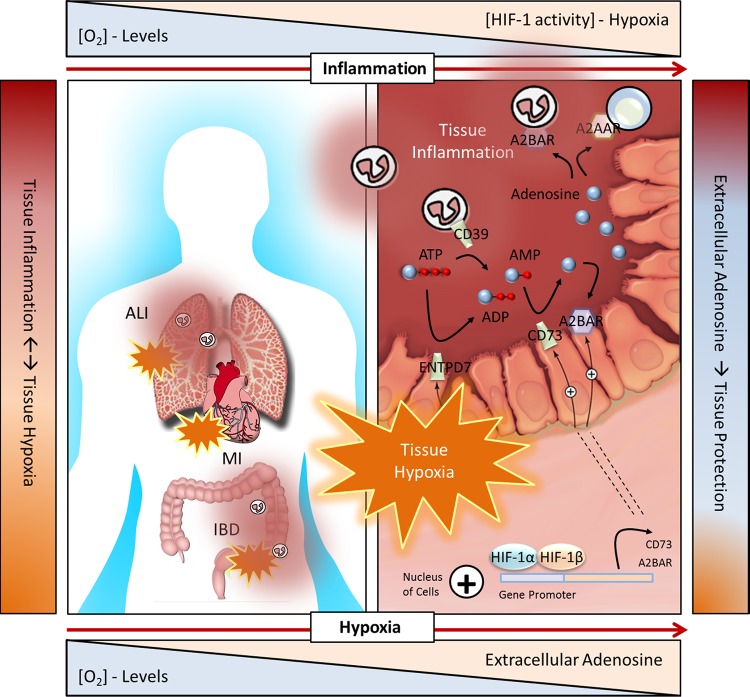Fig. 1.
Adenosine metabolism and signaling in human health conditions and diseases characterized by hypoxia-associated inflammation or inflammation-associated hypoxia. Right: hypoxia-driven adenosine metabolism and signaling in intestinal inflammation. Inflammatory bowel disease (IBD) is characterized by excessive inflammation that severely damages the mucosa. Inflammation is associated with a severe shift in oxygen supply and demand, resulting in profound hypoxia. With inflammation and hypoxia, multiple cells release ATP/ADP, including inflammatory cells, platelets, and epithelial cells. Activation of the ATP/ADP receptor P2X7 on enteric neuron cells further promotes inflammation and tissue injury [not shown (58)]. Hypoxia results in an Sp1-dependent induction of CD39 [not shown (47)] and a hypoxia-inducible factor (HIF)-dependent induction of CD73 (128) and A2BAR (76). CD39 is largely restricted to immune cells and vascular endothelium. Epithelial cell expression of ectonucleoside triphosphate diphosphohydrolase (NTPDase) activity may be related to CD39 family member ENTPD7 (83) and alkaline phosphatases (97). Together, increased CD39, CD73, and A2BAR support increased adenosine metabolism and signaling. Adenosine signaling, particularly involving A2AAR (101) and A2BAR (53), dampens inflammatory responses, such as tissue infiltration of neutrophils, and promotes protection of the barrier. [Modified from Eltzschig et al. (48) with permission. Copyright 2012 Massachusetts Medical Society.]

